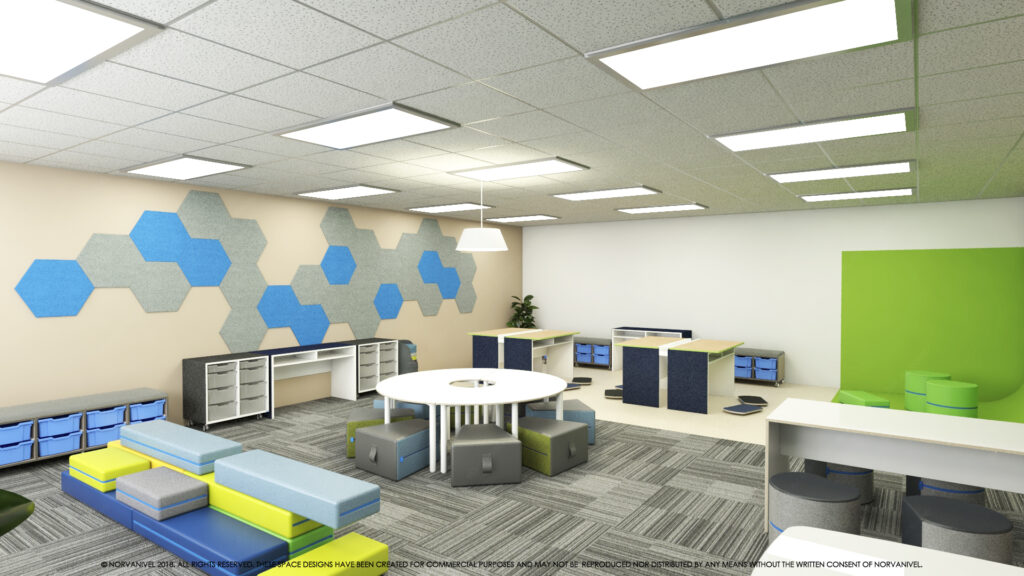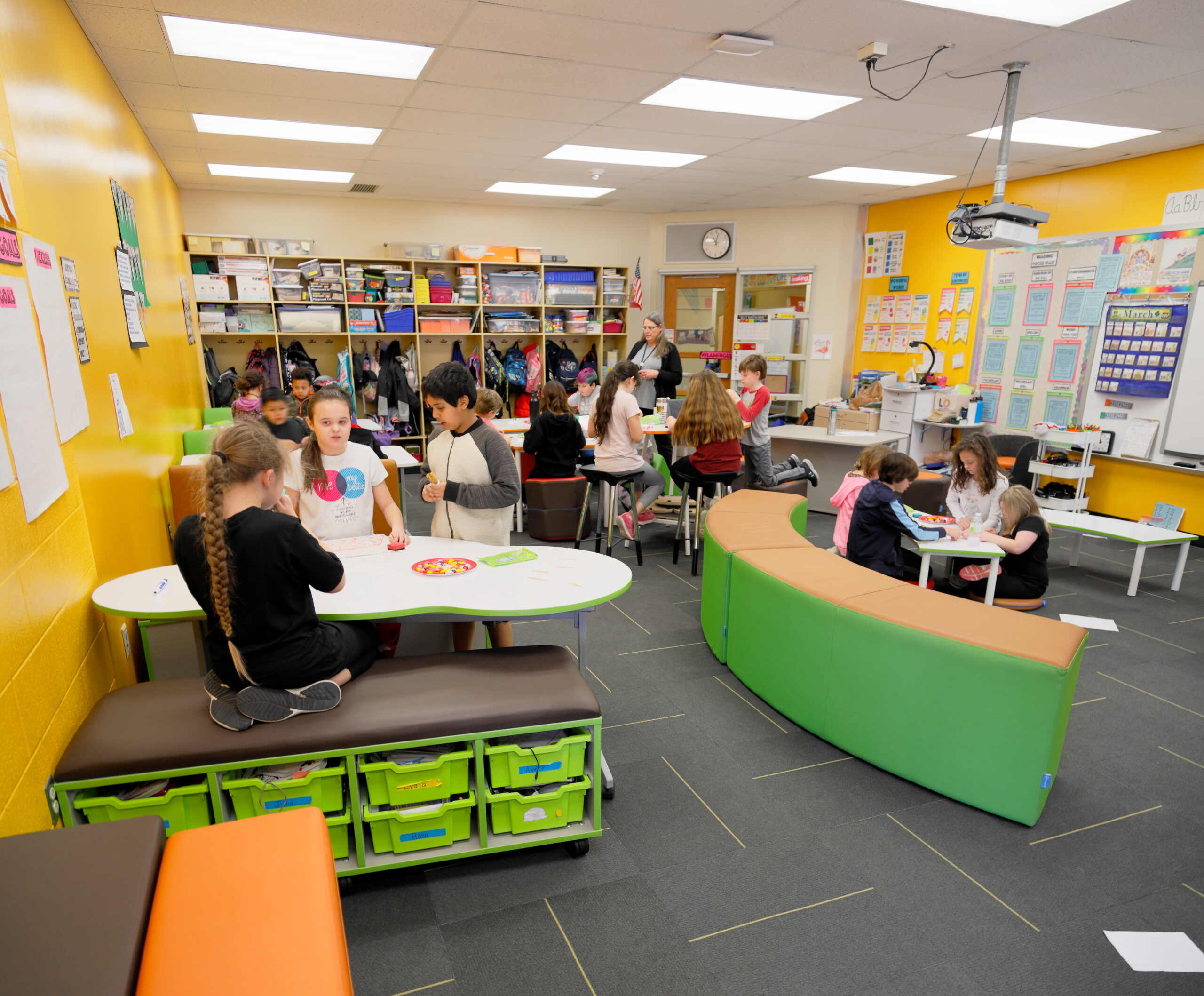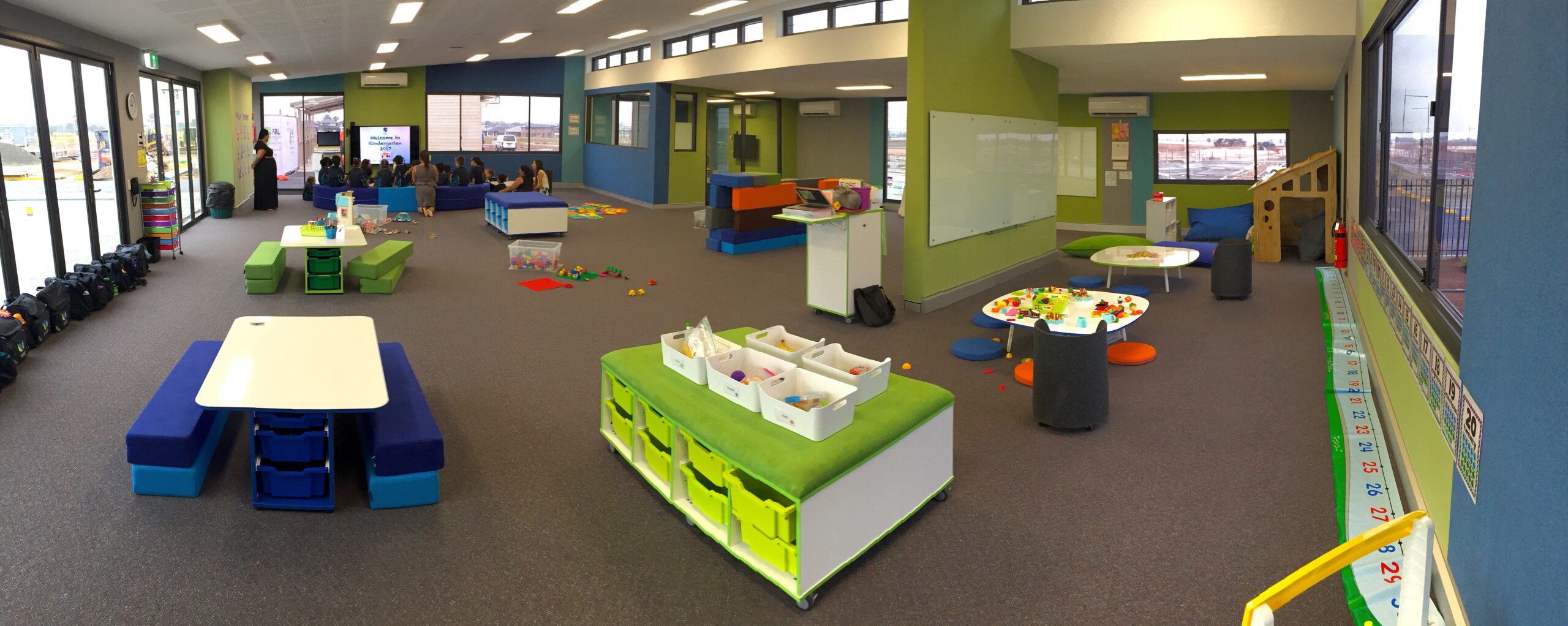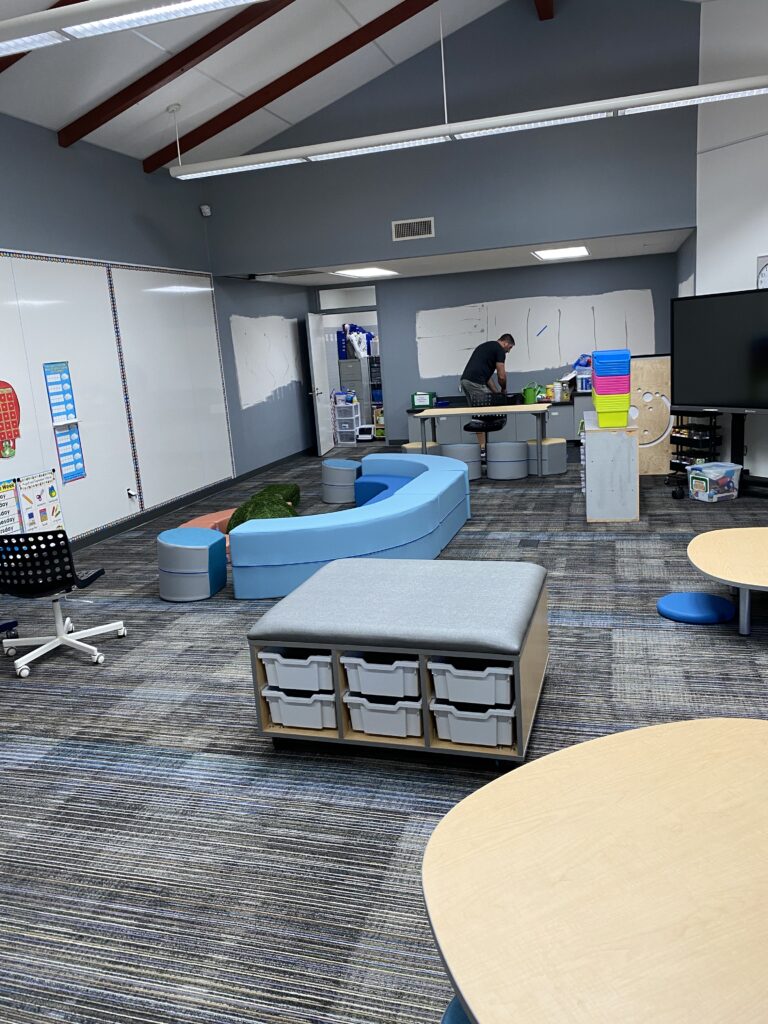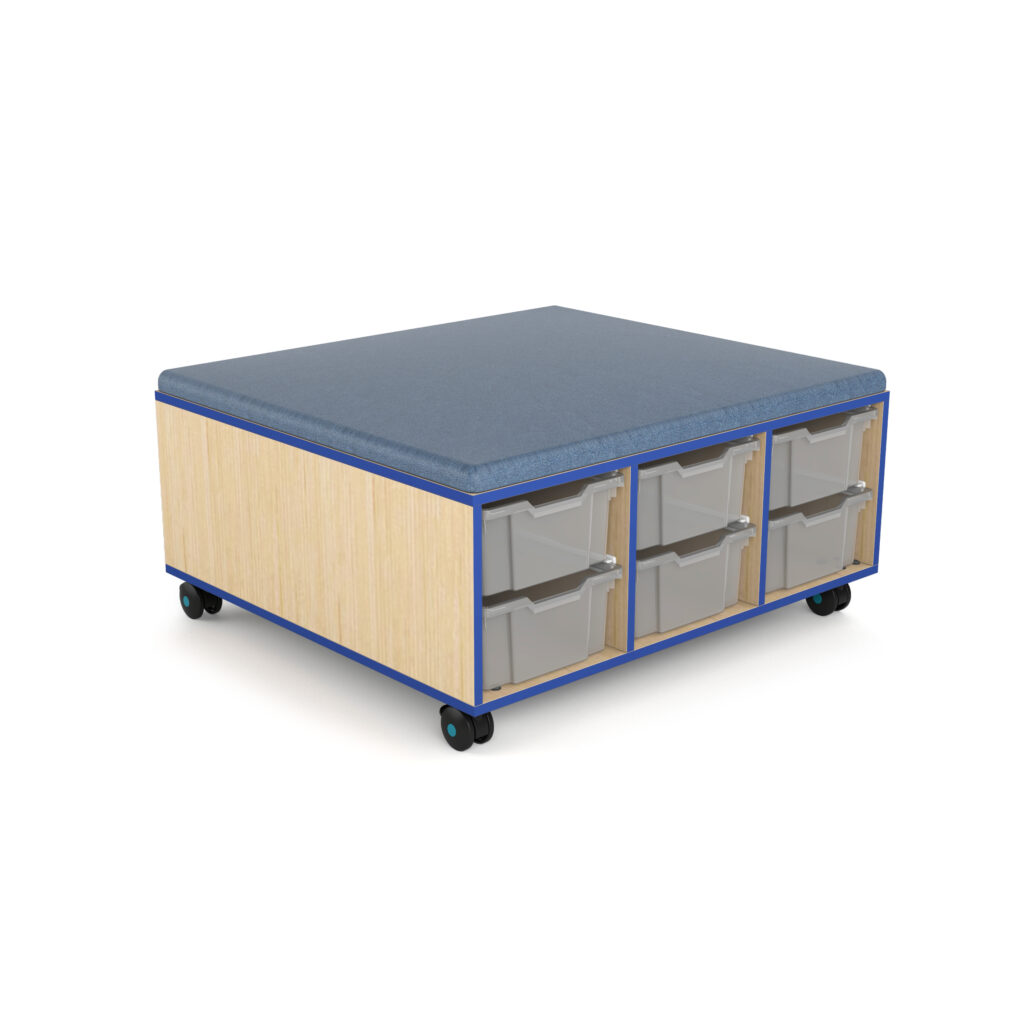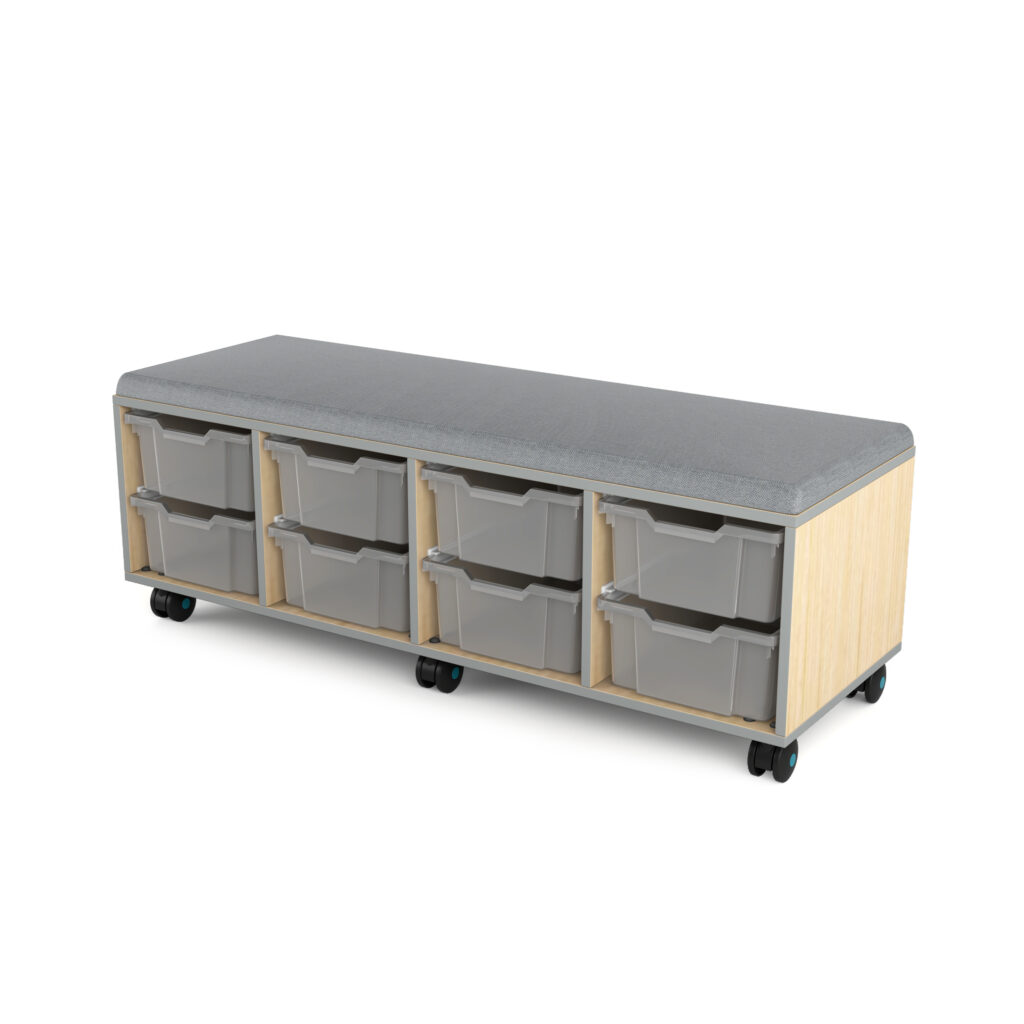Storage, am I right?
Anchor charts, measurement tools, Read Aloud displays, activity models, management systems, class job visuals, and endless arrays of manipulatives, art supplies, books, games etc. The number of materials being housed in classrooms is endless. Categorizing bins and storage closets by colors, months, seasons, event types, or ‘other’ has consumed majority of learning spaces for long enough. Studies continue to show the impact clutter has on a learning environment and individual academic/socio-emotional outcomes.
Clutter or Learning Resource?
You’ve parked in the parking lot or on the street and are making your way into the school building. You say good morning to the security guard or front desk employees and turn the corner. Graded papers and art projects on each side of the hallway rustle as you round the next bend. Stepping into your classroom, the lights flicker, and your eyes are met with a wall covered top to bottom in ‘learning resources’. Scanning the wall, you notice the following:
- Phonics (SFA, FUNdations, Reading Mastery etc.)
- Base 10
- White Board and/or Smart Board
- Morning Meeting Anchor Chart / Listening Expectations
- Calendar
- Homework and/or Rewards Tracker
- Number Line
- Key Vocab
- Morning Message
- Do Now Task(s)
And these are resources that exist on one wall, sometimes even the ceiling, … not counting the various ‘learning resources’ on the remaining three walls or in storage cabinets or on open shelving units. In 85% of Comprehensive Needs Assessment Walkthroughs, this is the scenario I witness.
Sensory Considerations
Throughout her research, Jude MacDonald, a Headteacher from Marshfield Primary School in Peterborough (UK), makes five distinct claims about clutter and learning environments:
- Clutter causes stress.
- A cluttered environment tells your brain that your work is never done.
- Clutter is paralyzing.
- Clutter wastes your time.
- Decluttering makes you more efficient.
These claims, in conjunction with information cited from the Madison House Autism Foundation, Jean Aryes Ph.D, Health Home and Happiness – Minimalism, and the article Advancing Full Spectrum Housing, build an argument of decluttering ALL spaces – starting with the classroom. The research also holistically supports academic organizations making use of therapeutic or ground-up models. (i.e. Communication-Based or Developmental-Based behavioral strategies).
Why should we consider clutter to begin with? After all, school walkthroughs, Pinterest, Instagram, and Teacher-Tok glorify the ever growing ‘learning resource’ wall. If it’s this popular with educational influencers, why go against the grain?
The Sensory Processing Disorder Foundation states:
Sensory processing (sometimes called “sensory integration” or SI) is a term that refers to the way the nervous system receives messages from the senses and turns them into appropriate motor and behavioral responses. Whether you are biting into a hamburger, riding a bicycle, or reading a book, your successful completion of the activity requires processing sensation or ‘sensory integration’. [Individuals] can find it difficult to process and act upon information received through the senses, which creates challenges in performing countless everyday tasks. Motor clumsiness, behavioral problems, anxiety, depression, school failure, and other impacts may result.
Health, Home, and Happiness – Minimalism comments, ‘What looks a little messy to you, [can] look like complete paralyzing chaos to a child. Toning down the toys, clutter, and decorations can help children [with special needs and processing considerations] feel more at home.’
EdUtopia published an updated article in 2018 titled, Dos and Dont’s of Classroom Decorations – What you put on your classroom walls can affect your students’ ability to learn. Throughout this article, Youki Terada also presents study-based claims in favor of minimalistic learning environments: ‘Overall, the results from these studies indicate that children could have difficulty in ignoring visual distractors when these are embedded in the surrounding environment’.
The following are several top ‘Do’ recommendations via EdUtopia:
- Display student work.
- Feature inspiring role models.
- Avoid Clutter – keep AT LEAST 20% of your wallspace clear and leave SPACE between displays to showcase organization of information.
- Let in natural light.
Okay, so there’s ample research highlighting the importance of decluttering the learning space. There’s also information regarding the ‘dos’ of how to utilize wall spaces and organization in a classroom. Putting this information together, presents criteria for product features that are not only helpful and supportive – but necessary.
Product Features – Store and Draw Upholstered Tub Caddy
Offering solutions that are multifaceted can create a positive chain reaction within learning environments. According to Paula Gonzalez, Daniel Noh, and Daniel Wilson from Harvard University Graduate School of Education Project Zero, ‘We interact with objects, materials, and tools to assist our thinking and expression. We look for surfaces, lighting, temperature, colors, and acoustics to create a sense of safety and calm.’
‘Spaces that support positive learning outcomes are design for optimal stimulation. Variations in elements provide visual complexity (Cox, 2018; Tanner, 2008) and varied materials can produce different sensations of touch and feel (Davies et al.,2014).’
The Store and Draw Upholstered Tub Caddy combines seating and storage in a developmentally appropriate and unique way. The removable tubs offer streamlined organization which also promotes agency. Learners have the opportunity to remove items they might need for various activities happening throughout the space. The Store and Draw Upholstered Tub Caddy rests on casters, which makes storage throughout the space possible. Instead of parameterizing organization, materials can be adequately stored and accessed while maintaining the flow of an individual’s experience. This not only assists with learning but also within the planning and preparation process. Facilitators have the option to store anchor charts, models, and other learning resources throughout the space opposed to monopolizing visual square footage. The top of the Store and Draw contains high-grade foam enclosed within healthcare grade antimicrobial vinyl, offering soft seating in the form of a bench. Employing several Store and Draw Upholstered Tub Caddys in partnership with a fliptop table or other surface creates a differentiated workspace. Generating combinations reflecting booths, hubs, corners, forts, etc. allows both the learner and facilitator to feel comfortable and relaxed.
Making Connections
To better gauge and measure classroom clutter, in 2019 ThoughtCo released the article Stop Classroom Clutter. Here are several important questions ThoughtCo would suggest asking:
- What purpose does this poster, sign, display, or material serve?
- Do these posters, signs, or items celebrate or support student learning?
- Are the posters, signs, displays, or materials current with what is being [experienced] in the classroom?
- Can the display be made interactive?
- Is there space between wall displays to help the eye distinguish what is being showcased?
- Can storage and organizational goals be embedded into the scope and sequence?
- Can students contribute to decorating the classroom?
Organization is an integral component of learning space design. Justifiably as important as the colors, angles, textures, furniture, and other resources planned for the learning environment. Products such as the Store and Draw Upholstered Tub Caddy offer features that are research-based, educationally sound, and easily workable.

